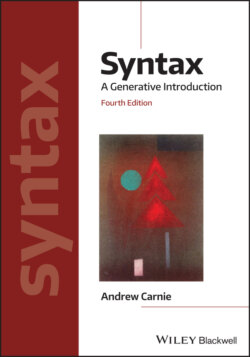Читать книгу Syntax - Andrew Carnie - Страница 23
7. CHOOSING AMONG THEORIES ABOUT SYNTAX
ОглавлениеThere is one last preliminary we have to touch on before actually doing some real syntax. In this book we are going to posit many hypotheses. Some of these we’ll keep, others we’ll revise, and still others we’ll reject. How do we know what is a good hypothesis and what is a bad one? Chomsky (1965) proposed that we can evaluate how good theories of syntax are using what are called the levels of adequacy. Chomsky claimed that there are three stages that a grammar (the collection of descriptive rules that constitute your theory) can attain in terms of scientific adequacy.
If your theory only accounts for the data in a corpus (say a series of printed texts) and nothing more, it is said to be an observationally adequate grammar. Needless to say, this isn’t much use if we are trying to account for the cognition of an i-language. As we discussed above, it doesn’t tell us the whole picture. We also need to know what kinds of sentences are unacceptable, or ill-formed. A theory that accounts for both corpora and native speaker judgments about well-formedness is called a descriptively adequate grammar. On the surface this may seem to be all we need. Chomsky, however, has claimed that we can go one step better. He points out that a theory that also accounts for how children acquire their language is the best. He calls this an explanatorily adequate grammar. The simple theory of parameters might get this label. Generative grammar strives towards explanatorily adequate grammars.
You now have enough information to try GPS9 and CPS12.
